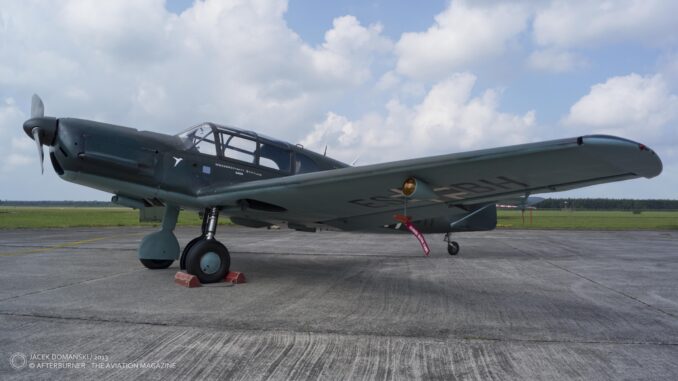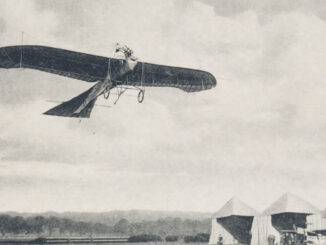
Messerschmitt Bf 108B-1 Taifun, D-ESBH (ES+BH, c/n 3701-14), owned by Messerschmitt Stiftung, exhibited at static display during the 100th Anniversary of German Naval Aviation, Fliegerhorst Nordholz, August 2013.
Among the most important aviation events in the interwar period there were four contests organized by FAI from 1929 to 1934. Officially named an International Tourist Plane Contest (or Challenge International de Tourisme in French) and commonly abbreviated as just ´Challenge´, those meetings were considered the most prestigious and major aviation event in Europe.
The initial idea of the ´Challenge´ was to be a tournament of so-called tourist aircraft, with two or more seats, competing in several trials: take-off, short landing, low and cruise speed and others. The participating countries quickly took the contest as an opportunity to show the achievements of their aviation industry, a high level of pilots´ skills and, most of all, to present the latest developments. Usually the aircraft taking part in the ´Challenge´ were both modified for the tournament, or prototypes developed exactly to meet the strict requirements of this competition.
A single-engine aircraft of all-metal construction created by Willy Messerschmitt and developed by Bayerische Flugzeugwerke under the designation of M 37, was one of such examples. The aeroplane was designed to participate in the 4th edition of the ´Challenge´, organized in Poland and being the last of the series.
The prototype performed its maiden flight on 13th June 1934 and approximately two and a half month later, four Bf 108 (as the aircraft was officially designated) took part in the Challenge 1934.
Although designed for the purpose of the competition, the Bf 108 performance was just average. The new German aeroplane did not get into the final results in short landing, take-off and minimum speed trials. The best for Bf 108 was the fuel consumption test and the maximum speed trial, with places 1st to 3rd taken by Taifuns in both categories. Eventually, in the overall ranking, the German crews flying Bf 108 aeroplanes had won the 5th, 6th and 10th place – being over-ranked by RWD-9S, Aero A.200 and another German aircraft, Fieseler Fi 97.
Despite those results, the Bf 108 quickly become a popular, although luxury, sport and touring aircraft, especially when its second, upgraded and more powerful, variant known as Bf 108B was flown in 1935. The nickname ´Taifun´ was created by Elly Beinhorn, a famous German female aviatior, and quickly adopted widely. Messerschmitt Bf 108 was also operated by Luftwaffe, as a liaison, training and personal transport aircraft.
There were more than 880 aircraft of that type manufactured until 1945, most of them for Luftwaffe purposes. The production of Bf 108 was also located in the occupied France and, after the World War II, continued as Nord 1002 and 1003 (more than 300 aircraft built).
The ´Taifuns´ were often used as record-breaking aircraft, including: 1935 speed record sightseeing flight Gliwice-Istanbul-Berlin (a race that earned the aircraft its nickname), 1937 Isle of Man speed race and 1939 world altitude record. Even in 1971, the Bf 108 was able to win the aeroclub speed race competition in Germany.
Currently there are three still airworthy Bf 108s in Germany, and approximately ten other original ones in the rest of the world. There are also about twenty or thirty post-war built Nord 1002/1003 aircraft that survived until today, they are either airworthy, or under restoration.
The Messerschmitt Bf 108 D-ESBH – pictured above – is owned by Messerschmitt Stiftung, a foundation that was established by Willy Messerschmitt in 1969 and today, inter alia, focuses on preserving his technical heritage.



